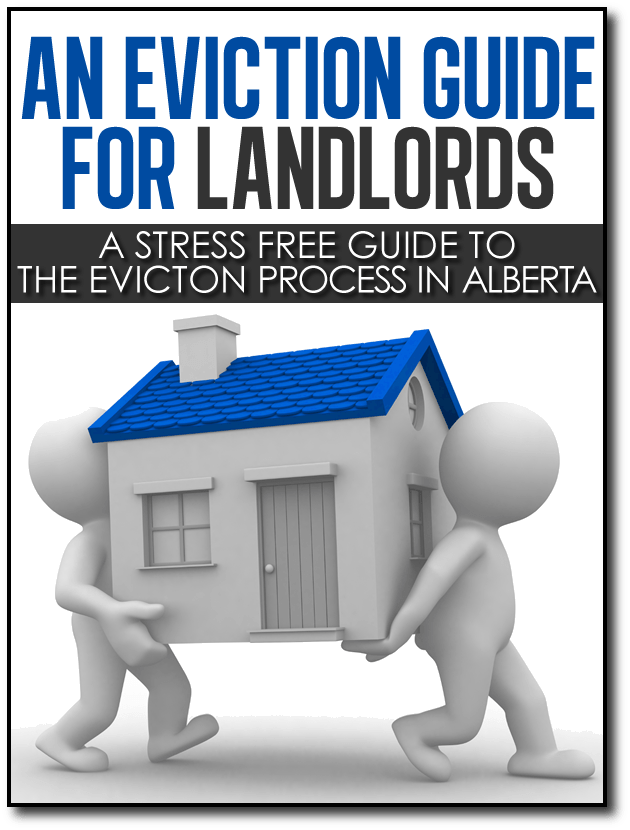At some point it happens to most landlords. They end up with a “problem” tenant. When you deal in shared accommodation/weekly room rentals as we do, it becomes a bit more common unfortunately.Fortunately a new process has started in Alberta called the Residential Tenancy Dispute Resolution Service, or RTDRS.
It was started in an effort to streamline the resolution process by avoiding going through court and incurring costly legal fees. At it’s simplest it is really just an arbitrator who hears both sides points, makes a legally binding decision and both sides have to comply. It can be used by tenants against bad landlords, by landlords against bad tenants and to even help good tenants and good landlords to come to a resolution over issues such as damage deposit confusion.
In my case I went down last Monday October the 27th with my four copies of all my evidence, documents and information, paid the $75 filing fee and my case is to be heard November 3rd at 3:00. How efficient is that? I couldn’t track down the tenant (as usual), so I taped the appearance notice and all the evidence to his door the next day after making a couple of attempts to track him down and he conveniently called me on the 30th to say he was working on it.
So best case I get paid on the weekend or Monday, worst case I get a judgment against him, don’t get my money but I can make his life difficult and possibly garnish his wages. Either way significantly faster than the old process, way more casual and quite a bit less costly versus hiring a bailiff to do an eviction.
If you want more information about the RTDSR, check out the Residential Tenancy Dispute Resolution Service Website. I will keep you posted on how this plays out!
More Alberta Tenant Eviction Stories
I recently added a series of Tips for Landlords to help them reduce stories like mine. They are available here, Landlord Tips and Advice. I’ve already received some great feedback from some of our readers, so hopefully it helps you out as well.




Here’s some more informaiton I wrote one evictions:
Handling tenant eviction is never a landlord’s favorite duty, but you can make it easier on yourself by knowing the process and the laws. Tenant eviction can happen for several reasons, for example, you sell your property and the new landlord wants to rent or lease to different people.
Other times evicting a tenant can become a long, drawn-out process especially if the tenant is angry about having to move or is doing something illegal like selling drugs out of your property. Then your situation can become dangerous and you must take precautionary steps to ensure your own safety.
You definitely need to know and follow the proper, legal steps to evict a tenant so that you are not slapped with any kind of wrongful eviction lawsuit. Here we will outline the proper steps to take in order to evict your tenant legally and protect yourself from repercussion.
**Note, many of these steps are for evictions in the US!! Laws may differ in your area**
1. File with the county courthouse a Notice to Quit Possession (you can Google samples if you need one). This is the first step in legally evicting a person or persons from your property. You fill out the form at the courthouse with all the property information included and the names of each adult tenant that you want evicted.
You are required to give a reason why you want them evicted, for example non-payment of rent, non-renewal of lease, destruction of property, etc. You are required to give them at least three (3) full days to vacate the premises on the Notice to Quit. This notice is then served to your tenants via a state marshal.
2. If the tenant has not moved by midnight of the day you requested that they vacate the premises as outlined in the Notice to Quit, you will then need to file a Summons and Complaint order. The tenant will be required to appear in court, and they have two (2) full days after receiving this order to file an Appearance to contest the eviction. If they do not, you as the landlord have the right to request a Default Judgment for Failure to Appear against them and rule in your favor. If the tenant files a response to your Summons and Complaint order, then you have to go to court for a trial hearing on your case.
3. At the court hearing you and the tenant will meet with a Housing Specialist who is trained in mediating cases concerning landlord and tenant affairs. They will discuss the case with both of you and will assist you in working out a fair settlement. If a fair settlement is obtained, the judge will review it and then approve or deny it based on the information he or she has before them. You do not have to settle the case. You can push it to trial where the judge will preside over the case and make a decision based on the evidence that is presented.
4. If the judge rules in your favor, the tenant has five days – called a Stay of Execution – to vacate the premises unless the case is for non-payment of rent only, in which case the tenant can apply to get up to three months to stay if the full amount of back rent is paid to the court within five days of the judgment being rendered. If the judgment is based on a termination of lease by lapse of time, the tenant can apply for an additional six months Stay of Execution from the hearing date.
5. Once the judgment has been rendered, the tenant has a set amount of time to vacate the premises – either the five (5) day Stay of Execution awarded by the courts or a longer period of time applied for Stay of Execution. If the tenant has not left your property by midnight on that last day, you can apply for a Summary Process Execution which gives the tenant 24 hours to vacate the premises or else they will be removed by physical force.
Pingback: Alberta Eviction Questions and Answers | The Investors Housez – Your Calgary Real Estate Information Site
I was just inquiring can you be evicted while the eviction is being held in arbitration. And if you believe it is a falsified eviction notice such as going after rent that has been signed for.
Hi Tyson,
Not sure if I understand, I think I need more information to fully answer. What kind of arbitration are you talking about as the Residential Tenancy Act doesn’t have an arbitration clause, it’s either court or the RTDRS. If it was court rodered arbitration, which I have never heard of, then it would over rule an eviction hearing.
As for a falsified eviction notice, did you pay them by check, if so you can prove it’s falsified by showing the cancelled check, if by cash, they should have given you a receipt, otherwise you will have issues as you cannot prove anything.
That’s all the feedback i can provide unless you can elaborate some more.
Bill